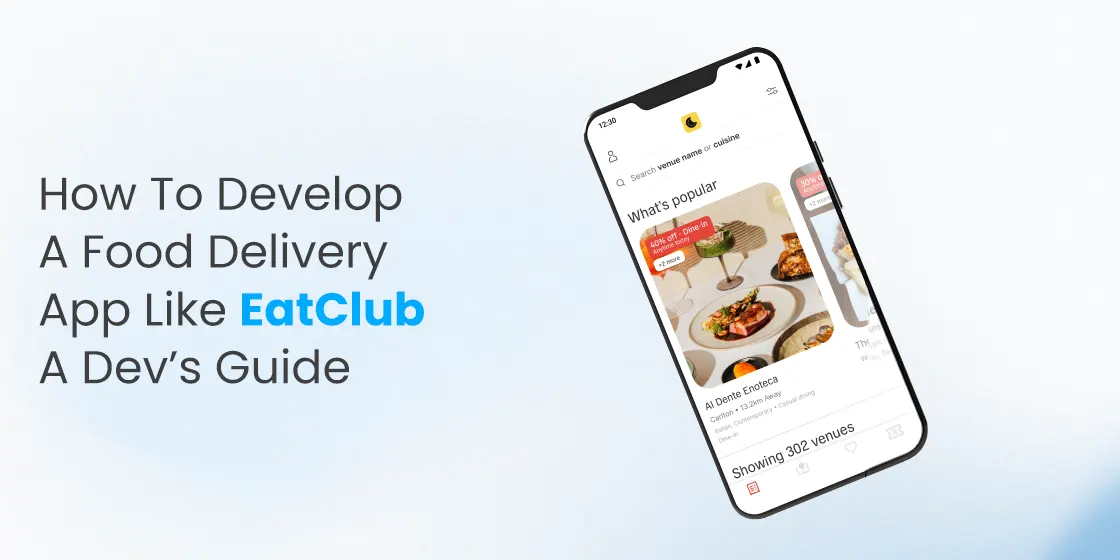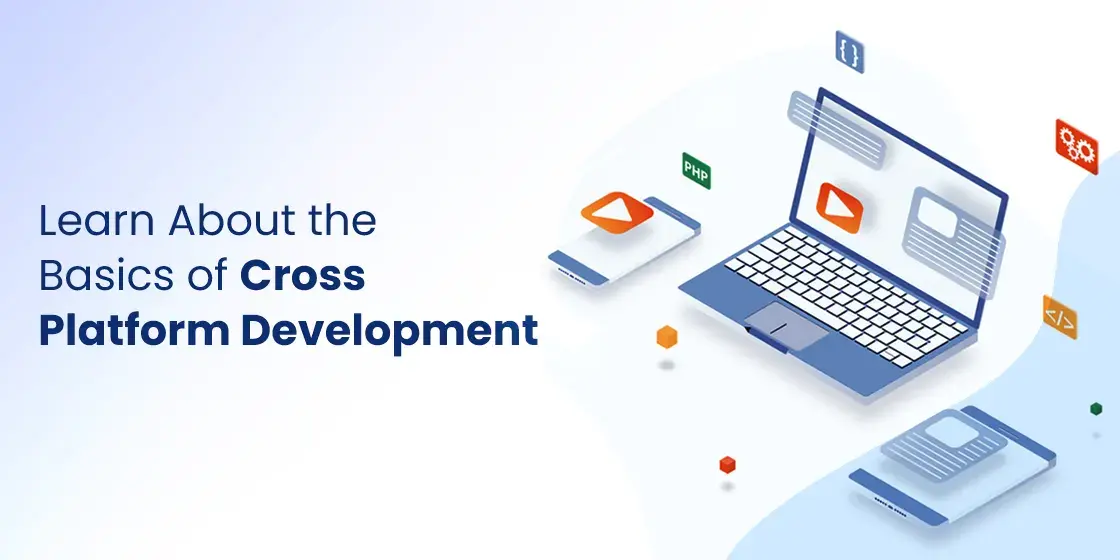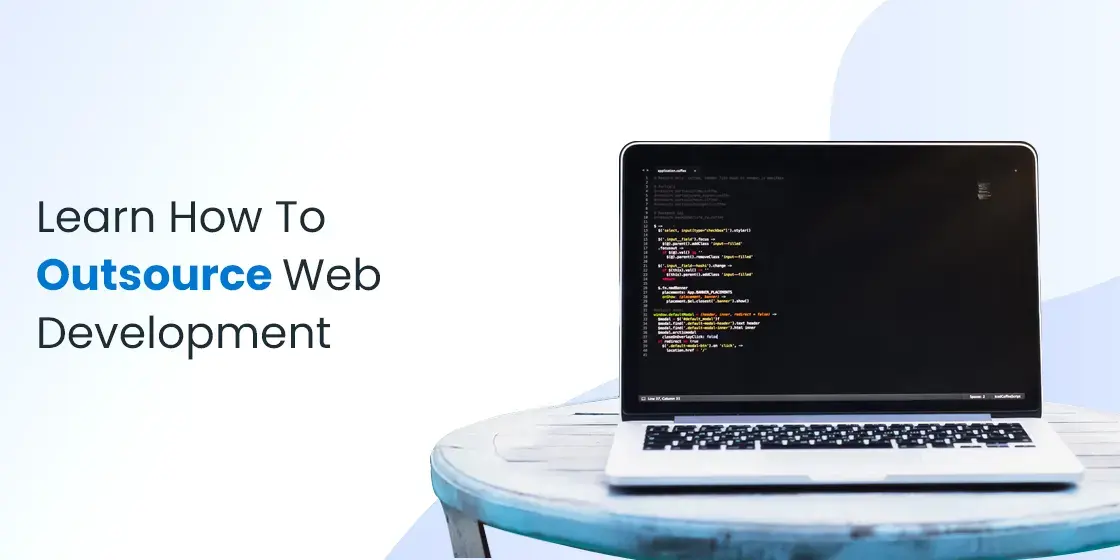Table of Content
Discover How You Can Create an Amazing Food Delivery App Like EatClub Today
The food delivery industry has experienced unprecedented growth, with the global market expected to reach $1.89 trillion by 2029. In this thriving ecosystem, apps like EatClub have carved out successful niches by focusing on specific market segments and innovative business models. Whether you’re a startup entrepreneur or an established business looking to enter the food delivery space, understanding how to develop a robust platform is crucial for success.
Creating a food delivery app like EatClub requires more than just connecting restaurants with customers—it demands strategic planning, technical expertise, and a deep understanding of user behavior. The modern food delivery landscape is highly competitive, with established players like UberEats, DoorDash, and Zomato dominating market share, yet there’s still significant room for innovation and niche-focused solutions.
This comprehensive guide will walk you through every aspect of developing a food delivery app like EatClub. From understanding its unique business model to implementing essential features, generating revenue, and managing development costs, we will look at it from a custom software development perspective. By the end of this guide, you’ll have a clear roadmap for bringing your food delivery vision to life.
What is EatClub? Understanding the Business Model and Market Position
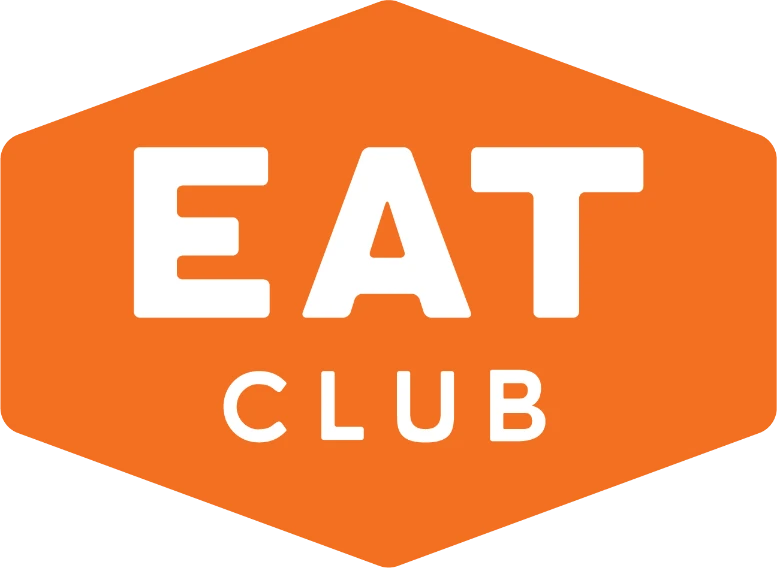
EatClub stands out in the crowded food delivery market through its specialized focus on corporate meal solutions and subscription-based services. Unlike traditional food delivery mobile app ideas that serve individual consumers on a per-order basis, EatClub primarily targets office workers and corporate clients, offering customized meal delivery services designed for the workplace environment.
The platform operates on a hybrid business model that combines B2B and B2C elements. Initially, EatClub generated revenue through individual employee subscriptions, but later pivoted to focus on corporate subscriptions where companies subsidize employee meals or integrate lunch benefits into their employee programs. This strategic shift has proven highly successful, with EatClub reporting approximately 87% repeat business rates.
EatClub’s technology infrastructure emphasizes reliability and scalability, utilizing proprietary logistics systems to ensure consistent delivery windows and meal quality. The platform partners with curated restaurant brands and maintains strict quality standards, positioning itself as a premium corporate food service rather than a general-purpose delivery app.
Market Positioning and Competitive Advantages
The corporate-focused approach of EatClub gives it several distinct advantages over generic food delivery platforms. By targeting businesses, EatClub can secure larger, more predictable revenue streams through corporate contracts while providing companies with an attractive employee benefit that helps with talent retention and workplace productivity.
EatClub’s emphasis on scheduled deliveries and consistent meal windows aligns perfectly with corporate lunch schedules, offering a level of reliability that traditional on-demand platforms often struggle to maintain. This focus on predictability and quality has enabled EatClub to build strong customer loyalty and achieve higher average order values compared to consumer-focused competitors.
The platform’s success demonstrates that there’s significant opportunity in developing a food delivery app like EatClub that serves specific market segments rather than attempting to compete directly with established giants. This niche approach allows for more targeted feature development, specialized partnerships, and focused marketing strategies that can be more cost-effective than broad-market approaches.
Turn your concepts into mobile apps brimming with advanced features. From inception to deployment, make a distinct impact in the market.
Contact Now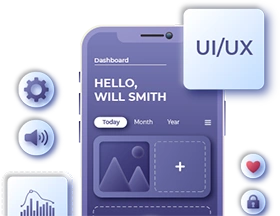
Technology and Operations Framework
EatClub’s technical architecture prioritizes reliability and efficiency over flashy features, recognizing that corporate clients value consistency above novelty. The platform integrates sophisticated logistics management, real-time order tracking, and automated scheduling systems that handle the complexities of delivering hundreds of meals to specific office locations within tight time windows.
The company’s proprietary technology stack includes advanced route optimization algorithms, inventory management systems, and integration capabilities with corporate HR and benefits platforms. This technical foundation enables EatClub to deliver on its core promise of hassle-free corporate meal management while maintaining the operational efficiency necessary for profitability.
Essential Features for Building a Food Delivery App Like EatClub
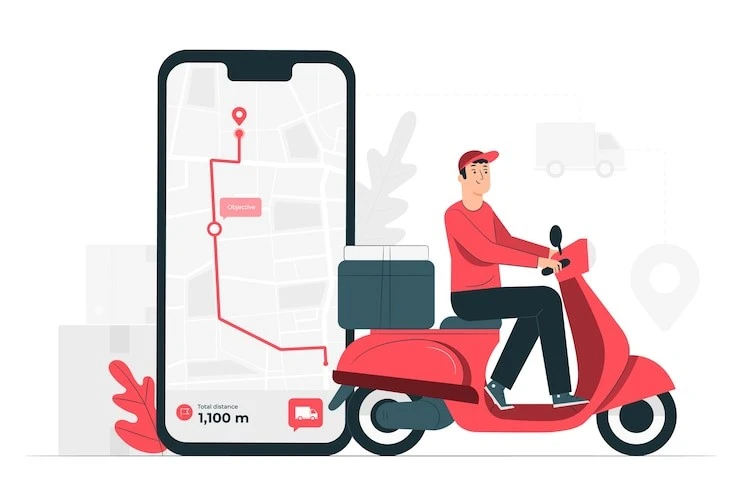
Like every app niche, Food delivery app like EatClub too needs to have some necessary core elements, as well as a few additional features to make the app option an interesting one. Let’s take a look at them to see how to create a delivery app for food.
Core User-Facing Features
When developing a food delivery app like EatClub, implementing the right feature set is crucial for user adoption and retention. The user interface should prioritize simplicity and speed, allowing customers to place orders quickly without unnecessary friction. Essential user features include streamlined registration and login processes, ideally supporting social media authentication to reduce signup barriers.
Advanced search and filtering capabilities
They form the backbone of user experience, enabling customers to find restaurants, cuisines, and specific dishes based on dietary preferences, price ranges, delivery times, and ratings. The search functionality should include intelligent recommendations based on order history and popular items in the user’s area.
Real-time order tracking
It has become a standard expectation, requiring integration with GPS systems and delivery partner applications. Users should receive automated updates throughout the order lifecycle, from restaurant confirmation to delivery completion, with accurate estimated arrival times that account for current traffic and weather conditions.
Restaurant and Vendor Management Features
Restaurant partners require robust tools to manage their presence on the platform effectively. A comprehensive restaurant dashboard should include menu management capabilities, real-time order notifications, inventory tracking, and performance analytics. Restaurant owners need the ability to update menu items, pricing, and availability instantly to prevent order conflicts and customer disappointment.
Delivery Management and Logistics Features
Efficient delivery management distinguishes successful food delivery platforms from mediocre ones. A food delivery app like EatClub requires sophisticated driver management systems that handle driver onboarding, background checks, vehicle verification, and performance monitoring. The system should optimize route planning to minimize delivery times and fuel costs while maximizing driver earnings.
Real-time fleet tracking
This enables platform operators to monitor delivery progress, identify potential delays, and reassign orders when necessary. This capability requires integration with mobile GPS systems and should include features for handling emergency situations, customer communication, and delivery confirmation through photos or digital signatures.
Dynamic pricing and surge management
It helps balance supply and demand during peak periods, ensuring adequate driver coverage while maintaining reasonable delivery costs. The system should automatically adjust delivery fees based on factors like weather conditions, local events, and historical demand patterns.
Administrative and Business Intelligence Features
Backend administrative tools are essential for platform operators to monitor performance, manage disputes, and maintain service quality. A comprehensive admin panel should include user management, order monitoring, financial reporting, and customer support tools. Administrators need the ability to track key performance indicators (KPIs) like order completion rates, customer satisfaction scores, and revenue metrics across different time periods and geographic regions.
Customer support integration
It should include ticketing systems, live chat capabilities, and automated response tools for common inquiries. The support system should maintain complete order histories and enable quick resolution of delivery issues, refund requests, and account problems.
Advanced Features for Competitive Advantage
To differentiate a food delivery app like EatClub from competitors, consider implementing innovative features that enhance user experience and operational efficiency.
- AI-powered recommendation engines can analyze user behavior, order history, and preferences to suggest relevant restaurants and menu items, increasing order values and customer satisfaction.
- Subscription and loyalty programs encourage repeat business by offering benefits like free delivery, exclusive menu access, or discounted pricing for frequent customers. These programs should be flexible enough to accommodate different customer segments and spending patterns while providing clear value propositions.
- Social features and community building can transform a transactional app into an engaging platform. Consider implementing features like user reviews, photo sharing, social media integration, and group ordering capabilities that enable colleagues or friends to coordinate shared meals and split costs automatically.
Revenue Generation Strategies: How Food Delivery Apps Like EatClub Maximize Profits
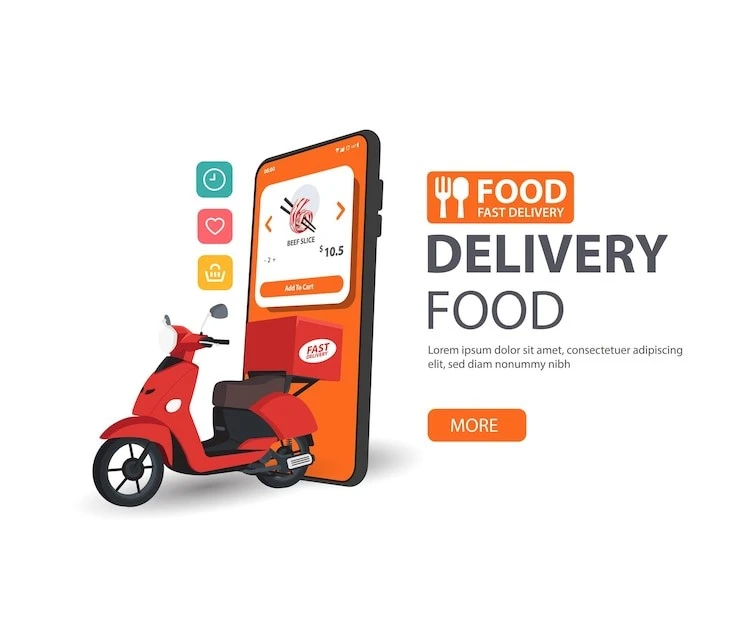
Food delivery platforms like EatClub employ multiple revenue streams to ensure financial sustainability and growth.
- Commission fees from restaurants typically represent the largest revenue source, with platforms charging 15-30% of order values depending on the service level and market conditions. This commission structure incentivizes platforms to increase order volumes and values while providing restaurants with customer access they couldn’t achieve independently.
- Delivery fees charged to customers provide another significant revenue stream, typically ranging from $1.99 to $4.99 per order depending on distance, order size, and time of day. Many platforms implement dynamic pricing that adjusts delivery fees based on demand, weather conditions, and driver availability, maximizing revenue during peak periods while maintaining competitive pricing during slower times.
- Subscription services create predictable recurring revenue while encouraging customer loyalty. EatClub’s corporate subscription model generates higher average revenue per customer compared to individual subscriptions, as businesses typically order larger quantities and more frequently than individual consumers. Subscription pricing should balance customer value with revenue generation, often including benefits like free delivery, priority service, or exclusive menu access.
Secondary Revenue Opportunities
Advertising and promotional revenue from restaurant partners provides additional income streams without directly impacting customer pricing. Restaurants pay for featured placement in search results, sponsored menu positions, or promotional campaigns targeting specific customer segments. These advertising options should be carefully balanced to maintain user experience while generating meaningful revenue for the platform.
Partnership and affiliate programs with food-related businesses create opportunities for revenue sharing. Partnerships might include grocery delivery services, alcohol delivery, meal kit companies, or kitchen equipment retailers. These partnerships can provide cross-selling opportunities and additional revenue streams while offering customers expanded services within a single platform.
Data monetization and market insights represent emerging revenue opportunities, though they must be handled carefully to maintain customer trust and comply with privacy regulations. Anonymized ordering data, restaurant performance metrics, and consumer trend analysis can provide valuable insights for restaurant chains, food manufacturers, and market research companies.
Premium Service Tiers
Developing premium service offerings allows platforms to capture additional value from customers willing to pay for enhanced experiences. Premium features might include faster delivery times, access to exclusive restaurants, priority customer support, or advanced customization options. These services should provide clear value propositions that justify higher pricing while maintaining accessibility for standard users.
Corporate and enterprise services represent particularly lucrative market segments, as businesses often require specialized features like bulk ordering, expense reporting integration, dietary restriction management, and detailed analytics. Enterprise pricing can be significantly higher than consumer pricing while providing additional services like dedicated account management and custom integration support.
White-label and franchise opportunities enable platforms to expand their reach while generating licensing revenue. Successful food delivery platforms can license their technology and operational expertise to other businesses or geographic markets, creating scalable revenue streams with lower operational overhead.
Key Factors Affecting Development Costs for Food Delivery Apps Like EatClub
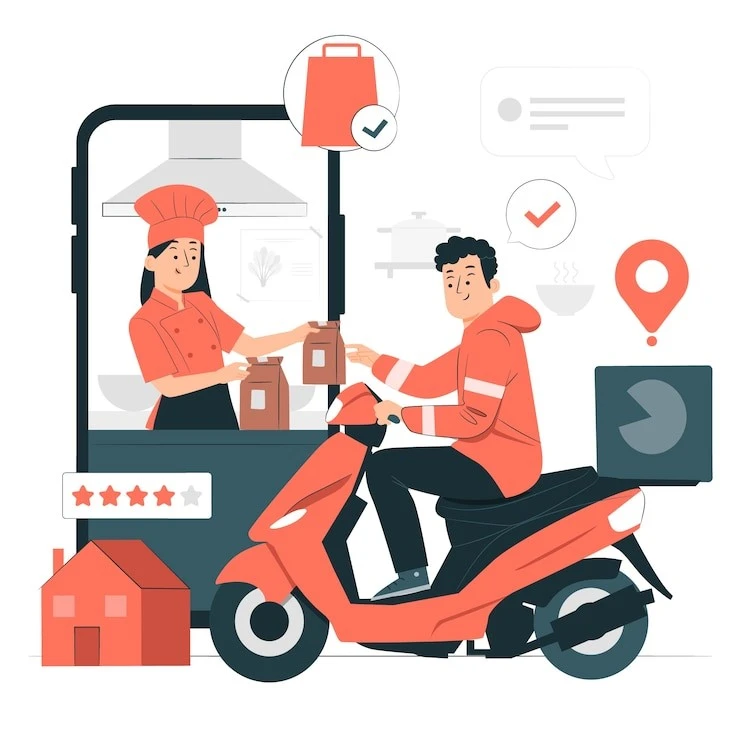
Following are some of the key factors that affect the development cost of a food delivery app like EatClub. Let’s take a look at it in detail.
Application Complexity and Feature Set
The complexity of features and the UI design process directly impacts development costs, with basic food delivery apps starting around $15,000-$30,000 for single-platform development, while advanced applications with comprehensive feature sets can cost $50,000-$150,000 or more. MVP (Minimum Viable Product) development typically includes essential features like user registration, restaurant browsing, order placement, payment processing, and basic order tracking, representing the most cost-effective entry point for new platforms.
Advanced feature integration
This significantly increases development costs but may be necessary for competitive differentiation. Features like AI-powered recommendations, real-time analytics, sophisticated logistics optimization, and multi-tenant architecture for corporate clients require specialized expertise and extended development timeframes that can double or triple basic development costs.
Third-party integrations
They add complexity and cost but are often essential for platform functionality. Payment gateway integration, mapping and GPS services, SMS and email notifications, social media authentication, and POS system connections each require development time and ongoing maintenance. The number and complexity of integrations directly correlate with total development costs and timeline.
Platform and Technology Choices – Native vs. cross-platform development
This represents a fundamental decision affecting both costs and capabilities. Native development for iOS and Android typically costs more upfront but provides better performance, user experience, and access to platform-specific features. Cross-platform solutions using frameworks like React Native or Flutter can reduce development costs by 20-40% while maintaining good performance for most use cases.
Technology stack selection
It impacts both development and operational costs. Modern web technologies like Node.js, React, and cloud-based databases provide scalability and developer availability but may have higher hosting costs. Legacy technologies might have lower operational costs but could limit future development options and increase maintenance complexity.
Cloud infrastructure and hosting
These costs vary significantly based on expected user volumes and feature requirements. Platforms serving thousands of concurrent users require robust infrastructure with auto-scaling capabilities, load balancing, and global content delivery networks that can cost thousands of dollars monthly. Early-stage platforms can start with basic hosting solutions and scale infrastructure as user volumes grow.
Development Team composition and expertise
It significantly influences development costs and project success. A complete food delivery app development team typically includes project managers, UI/UX designers, frontend developers, backend developers, mobile app developers, quality assurance specialists, and DevOps engineers. The experience level and specialization of team members directly impact both hourly rates and development efficiency.
Geographic location of development teams
This creates substantial cost variations. Development teams in North America and Western Europe typically charge $100-$200 per hour, while teams in Eastern Europe charge $50-$100 per hour, and teams in Asia charge $25-$75 per hour. However, lower hourly rates don’t always translate to lower total costs due to potential communication challenges, time zone differences, and varying quality standards.
In-house vs. outsourced development
It presents different cost structures and risk profiles. In-house development provides better control and communication but requires significant upfront investment in hiring and infrastructure. Outsourced development can reduce initial costs and provide access to specialized expertise but may involve additional project management overhead and potential quality control challenges.
Frequently Asked Questions
| How much does it typically cost to develop a food delivery app like EatClub? The cost to develop a food delivery app like EatClub varies significantly based on features and complexity. A basic MVP typically costs $15,000-$30,000 for single-platform development, while comprehensive applications with advanced features can range from $50,000-$150,000. Factors affecting cost include platform choice (iOS, Android, or both), feature complexity, development team location, and integration requirements. Corporate-focused apps like EatClub often require additional enterprise features that can increase development costs by 20-40% compared to consumer-only platforms. |
| What are the essential features needed to compete with established food delivery platforms? Essential features for a competitive food delivery app include user registration and authentication, restaurant discovery with search and filtering, shopping cart and order management, multiple payment options, real-time order tracking, push notifications, rating and review systems, and customer support integration. Advanced features like AI-powered recommendations, subscription services, corporate ordering tools, and sophisticated logistics management can provide competitive advantages but require additional development investment and technical expertise. |
| How long does it typically take to develop and launch a food delivery app like EatClub? Development timelines for food delivery apps typically range from 4-12 months depending on complexity and feature set. An MVP with basic functionality can be developed in 3-6 months, while comprehensive platforms with advanced features may require 8-12 months or longer. Timeline factors include team size and expertise, feature complexity, third-party integrations, testing requirements, and market research and planning phases. Agile development methodology can accelerate delivery by enabling iterative feature releases and early user feedback integration. |
| What ongoing costs should I expect after launching a food delivery app? Post-launch costs typically include hosting and infrastructure (5-15% of revenue), maintenance and updates (15-25% of initial development cost annually), customer support operations, marketing and user acquisition, payment processing fees (2-4% of transaction volume), and feature development and platform improvements. Additional costs may include legal and compliance requirements, insurance, and business development activities. Successful platforms often reinvest 20-30% of revenue into platform improvements and market expansion to maintain competitive positioning. |
| How can I differentiate my food delivery app from established competitors like UberEats and DoorDash? Differentiation strategies include focusing on specific market segments (corporate clients, specific cuisines, or geographic areas), offering unique service features (scheduled delivery, subscription models, or premium service tiers), developing superior technology (faster delivery, better user experience, or advanced analytics), creating strategic partnerships with restaurant chains or corporate clients, and implementing innovative business models that provide better value for restaurants or customers. EatClub’s success demonstrates that specialized focus on corporate clients can create sustainable competitive advantages even in crowded markets. |
Conclusion
Developing a food delivery app like EatClub represents both significant opportunity and substantial challenge in today’s competitive marketplace. Success requires more than technical execution—it demands strategic thinking, market understanding, and relentless focus on user experience and operational efficiency. The platforms that thrive are those that identify specific market niches, deliver consistent value to all stakeholders, and continuously evolve their offerings based on user feedback and market conditions.
The investment required to build a food delivery app like EatClub can vary dramatically based on feature complexity, target market, and technical architecture choices. However, the potential returns justify the investment for platforms that execute effectively, with successful food delivery platforms generating substantial revenue through multiple streams while creating value for restaurants, delivery partners, and customers alike.
Empower your digital initiatives with BariTechSol, a premier custom software development company. Our skilled team tailors cutting-edge solutions to your unique needs. Elevate your tech experience and stay ahead in the digital realm. Partner with BaritechSol and code the success of your next big idea.
